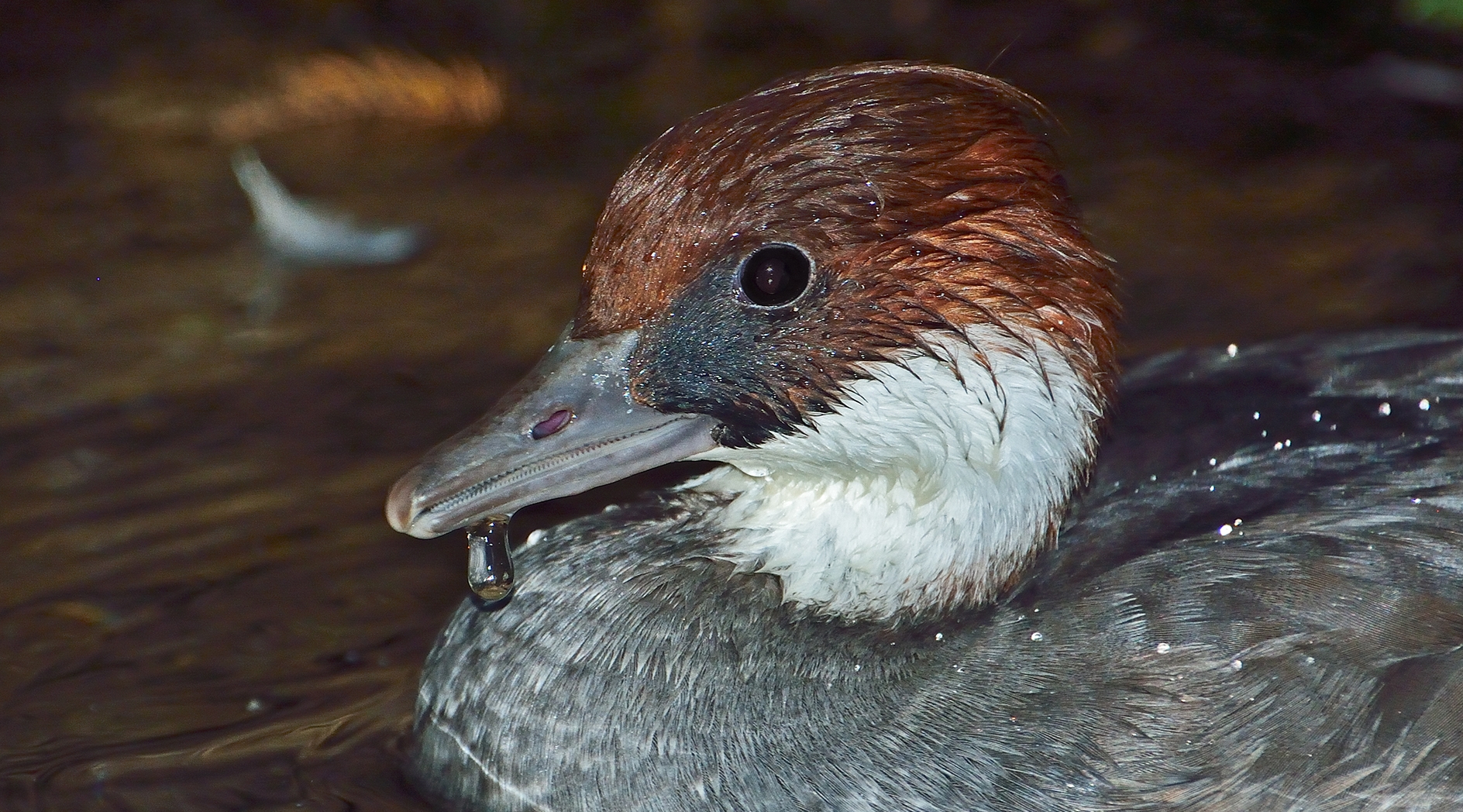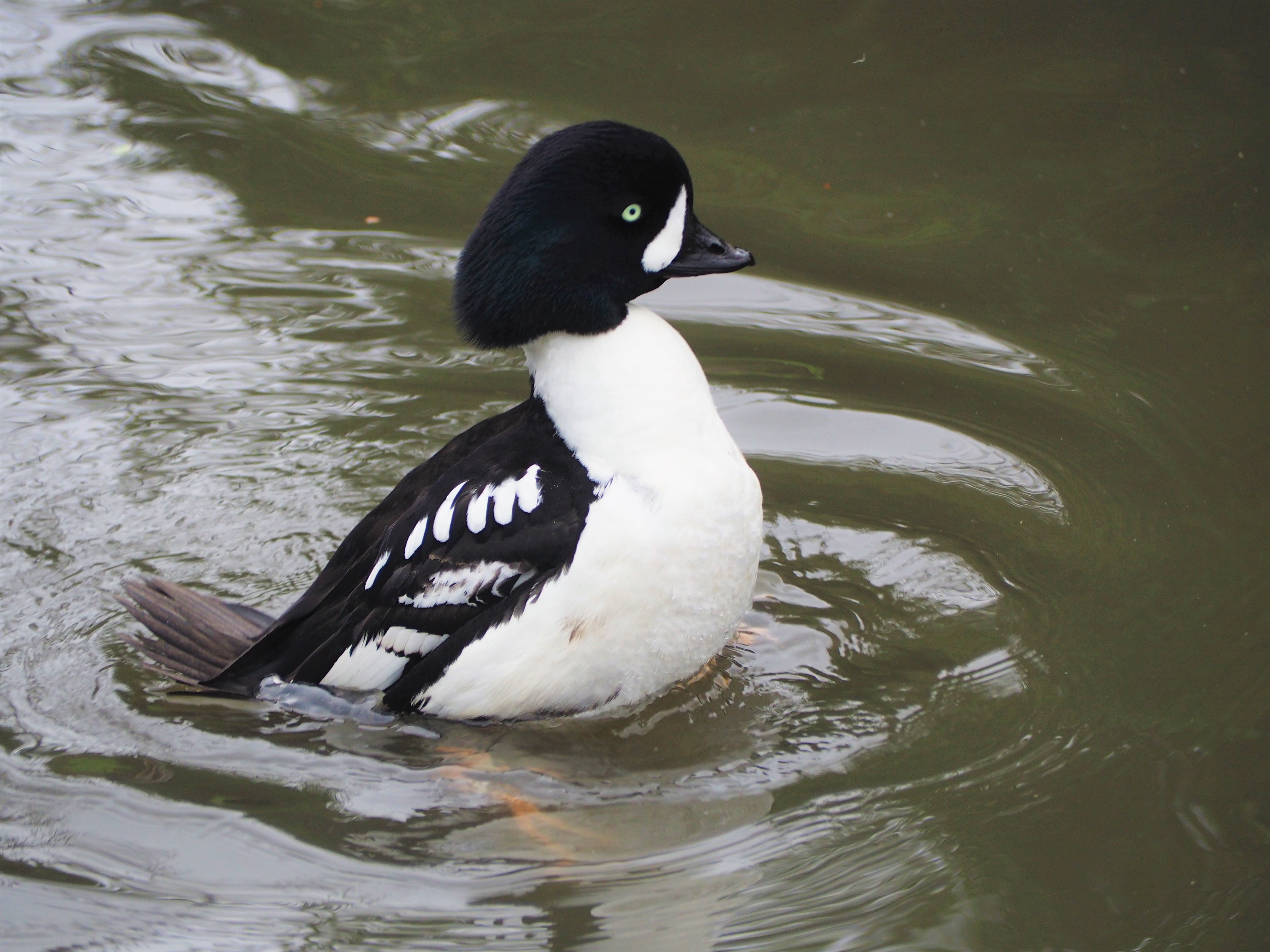|
Mergansers
''Mergus'' is the genus of the typical mergansers ( ) fish-eating ducks in the subfamily Anatinae. The genus name is a Latin word used by Pliny the Elder and other Ancient Rome, Roman authors to refer to an unspecified waterbird. The common merganser (''Mergus merganser'') and red-breasted merganser (''M. serrator'') have broad ranges in the northern hemisphere. The Brazilian merganser (''M. octosetaceus'') is a South American duck, and one of the six most Threatened species, threatened waterfowl in the world, with possibly fewer than 250 birds in the wild. The scaly-sided merganser or "Chinese merganser" (''M. squamatus'') is an endangered species. It lives in temperate East Asia, breeding in the north and wintering in the south. The hooded merganser (''Lophodytes cucullatus'', formerly known as ''Mergus cucullatus'') is not of this genus but is closely related. The other "aberrant" merganser, the smew (''Mergellus albellus''), is phylogenetics, phylogenetically closer to golde ... [...More Info...] [...Related Items...] OR: [Wikipedia] [Google] [Baidu] |
Common Merganser
The common merganser (North American) or goosander (Eurasian) (''Mergus merganser'') is a large sea duck of rivers and lakes in forested areas of Europe, Asia, and North America. The common merganser eats mainly fish. It nests in holes in trees. Taxonomy The first formal description of the common merganser was written by Swedish naturalist Carl Linnaeus in 1758 in the 10th edition of his ''Systema Naturae''. He introduced the current binomial name ''Mergus merganser''. The genus name is a Latin word used by Pliny and other Roman authors to refer to an unspecified waterbird, and ''merganser'' is derived from ''mergus'' and ''anser'', Latin for "goose". In 1843 John James Audubon used the name "Buff-breasted Merganser" in addition to "goosander" in his book '' The Birds of America''. The three subspecies differ in only minor detail: Description It is long with a wingspan and a weight of ; males are on average slightly larger than females, but with some overlap. Like othe ... [...More Info...] [...Related Items...] OR: [Wikipedia] [Google] [Baidu] |
Red-breasted Merganser
The red-breasted merganser (''Mergus serrator'') is a duck species that is native to much of the Northern Hemisphere. The red breast that gives the species its common name is only displayed by males in breeding plumage. Individuals fly rapidly, and feed by diving from the surface to pursue aquatic animals underwater, using serrated bills to capture slippery fish. They migrate each year from breeding sites on lakes and rivers to their mostly coastal wintering areas, making them the only species in the genus '' Mergus'' to frequent saltwater. They form flocks outside of breeding season that are usually small but can reach 100 individuals. The worldwide population of this species is stable, though it is threatened in some areas by habitat loss and other factors. Taxonomy The red-breasted merganser was formally described in 1758 by the Swedish naturalist Carl Linnaeus in the tenth edition of his ''Systema Naturae'' under the current binomial name ''Mergus serrator''. The genu ... [...More Info...] [...Related Items...] OR: [Wikipedia] [Google] [Baidu] |
Smew
The smew (''Mergellus albellus'') is a species of duck and is the only living member of the genus ''Mergellus''. ''Mergellus'' is a diminutive of ''Mergus'' and ''albellus'' is from Latin ''albus'' "white". This genus is closely related to ''Mergus'' and is sometimes included in it, though it might be closer to the goldeneyes (''Bucephala''). The smew has hybridized with the common goldeneye (''B. clangula''). Etymology The smew was formally described in 1758 by the Swedish naturalist Carl Linnaeus in the tenth edition of his ''Systema Naturae'' under the binomial name ''Mergus albellus''. Linnaeus based his account on the description published in 1757 by another Swedish naturalist, Fredrik Hasselqvist. Linnaeus specified the type locality as Europe but this was restricted to the Mediterranean near İzmir in Turkey. The smew is now the only living species placed in the genus '' Mergellus'' that was introduced in 1840 by the English naturalist Prideaux Selby. The species is ... [...More Info...] [...Related Items...] OR: [Wikipedia] [Google] [Baidu] |
Mergus Serrator
The red-breasted merganser (''Mergus serrator'') is a duck species that is native to much of the Northern Hemisphere. The red breast that gives the species its common name is only displayed by males in breeding plumage. Individuals fly rapidly, and feed by diving from the surface to pursue aquatic animals underwater, using serrated bills to capture slippery fish. They migrate each year from breeding sites on lakes and rivers to their mostly coastal wintering areas, making them the only species in the genus ''Mergus'' to frequent saltwater. They form flocks outside of breeding season that are usually small but can reach 100 individuals. The worldwide population of this species is stable, though it is threatened in some areas by habitat loss and other factors. Taxonomy The red-breasted merganser was formally described in 1758 by the Swedish naturalist Carl Linnaeus in the tenth edition of his ''Systema Naturae'' under the current binomial name ''Mergus serrator''. The genus nam ... [...More Info...] [...Related Items...] OR: [Wikipedia] [Google] [Baidu] |
New Zealand Merganser
The Auckland Island merganser (''Mergus australis'') (), also known as the New Zealand merganser, is an Bird extinction, extinct species of Mergus, typical merganser. Description This duck was similar in size to the red-breasted merganser (''Mergus serrator''). The adult male had a dark reddish-brown head, crest and neck, with bluish black mantle and tail and slate grey wings. The female was slightly smaller with a shorter crest. History The Auckland Island merganser was known from the Auckland Islands archipelago, part of the New Zealand Subantarctic Islands. The only historical records are from Auckland Island and Adams Island (New Zealand), Adams Island. Holocene bones were found on Enderby Island.Miskelly, Colin & Forsdick, Natalie & Gill, Brian & Palma, Ricardo & Rawlence, Nicolas & Tennyson, Alan. (2022). CHECKLIST OF THE BIRDS OF NEW ZEALAND. https://www.researchgate.net/publication/361824003_CHECKLIST_OF_THE_BIRDS_OF_NEW_ZEALAND The last specimens were apparently a p ... [...More Info...] [...Related Items...] OR: [Wikipedia] [Google] [Baidu] |
Red-breasted Merganser
The red-breasted merganser (''Mergus serrator'') is a duck species that is native to much of the Northern Hemisphere. The red breast that gives the species its common name is only displayed by males in breeding plumage. Individuals fly rapidly, and feed by diving from the surface to pursue aquatic animals underwater, using serrated bills to capture slippery fish. They migrate each year from breeding sites on lakes and rivers to their mostly coastal wintering areas, making them the only species in the genus '' Mergus'' to frequent saltwater. They form flocks outside of breeding season that are usually small but can reach 100 individuals. The worldwide population of this species is stable, though it is threatened in some areas by habitat loss and other factors. Taxonomy The red-breasted merganser was formally described in 1758 by the Swedish naturalist Carl Linnaeus in the tenth edition of his ''Systema Naturae'' under the current binomial name ''Mergus serrator''. The genu ... [...More Info...] [...Related Items...] OR: [Wikipedia] [Google] [Baidu] |
Brazilian Merganser
The Brazilian merganser (''Mergus octosetaceus'') is a South American diving duck in the ''Mergus'' genus. It is one of the most threatened waterfowl species in the world, with possibly fewer than 250 birds in the wild and a small number kept in captivity in Brazil and Czechia. It has a long, sharp-edged beak with a great number of tooth-like edges. Description This merganser is a dark, slender duck with a shiny dark-green hood with a long crest, which is usually shorter and more worn-looking in females. Upperparts are dark grey while the breast is light grey, getting paler toward the whitish belly, and a white speculum is particularly noticeable in flight. It has a long thin jagged black bill with red feet and legs. Although females are smaller with a shorter bill and crest, both sexes are alike in color. The slender ducks range in size from as an adult. Young Brazilian mergansers are mainly black with white throat and breast. The Brazilian mergansers are generally si ... [...More Info...] [...Related Items...] OR: [Wikipedia] [Google] [Baidu] |
Goldeneye (duck)
''Bucephala'' is a genus of diving ducks found in the Northern Hemisphere. Taxonomy The genus ''Bucephala'' was introduced in 1858 by American naturalist Spencer Baird with the bufflehead as the type species. The genus name is derived from Ancient Greek , meaning , from , and , , a reference to the crest of the bufflehead making its head look large. The bufflehead was formerly treated as the only member of the genus (sometimes unnecessarily changed to ''Charitonetta'') while the goldeneyes were incorrectly placed in '' Clangula'' (as ''Clangula americana''), the genus of the long-tailed duck, which at that time was placed in '' Harelda''. It may yet be correct to recognise two genera, as the bufflehead and the two goldeneyes are well diverged. In this case, ''Bucephala'' would be restricted to ''B. albeola'' and the name ''Glaucionetta'' (Stejneger, 1885) resurrected for the goldeneyes. Species The three living species are: Known fossil taxa are: * ''Bucephala ... [...More Info...] [...Related Items...] OR: [Wikipedia] [Google] [Baidu] |
Phylogenetics
In biology, phylogenetics () is the study of the evolutionary history of life using observable characteristics of organisms (or genes), which is known as phylogenetic inference. It infers the relationship among organisms based on empirical data and observed heritable traits of DNA sequences, protein amino acid sequences, and morphology. The results are a phylogenetic tree—a diagram depicting the hypothetical relationships among the organisms, reflecting their inferred evolutionary history. The tips of a phylogenetic tree represent the observed entities, which can be living taxa or fossils. A phylogenetic diagram can be rooted or unrooted. A rooted tree diagram indicates the hypothetical common ancestor of the taxa represented on the tree. An unrooted tree diagram (a network) makes no assumption about directionality of character state transformation, and does not show the origin or "root" of the taxa in question. In addition to their use for inferring phylogenetic pa ... [...More Info...] [...Related Items...] OR: [Wikipedia] [Google] [Baidu] |
Mollusk
Mollusca is a phylum of protostomic invertebrate animals, whose members are known as molluscs or mollusks (). Around 76,000 extant species of molluscs are recognized, making it the second-largest animal phylum after Arthropoda. The number of additional fossil species is estimated between 60,000 and 100,000, and the proportion of undescribed species is very high. Many taxa remain poorly studied. Molluscs are the largest marine phylum, comprising about 23% of all the named marine organisms. They are highly diverse, not just in size and anatomical structure, but also in behaviour and habitat, as numerous groups are freshwater and even terrestrial species. The phylum is typically divided into 7 or 8 taxonomic classes, of which two are entirely extinct. Cephalopod molluscs, such as squid, cuttlefish, and octopuses, are among the most neurologically advanced of all invertebrates—and either the giant squid or the colossal squid is the largest known extant i ... [...More Info...] [...Related Items...] OR: [Wikipedia] [Google] [Baidu] |
Mergini
The sea ducks (Mergini) are a tribe of the duck subfamily of birds, the Anatinae. The taxonomy of this group is incomplete. Some authorities separate the group as a subfamily, while others remove some genera. Most species within the group spend their winters near coastal waters. Many species have developed specialized salt glands to allow them to tolerate salt water, but these are poorly developed in juveniles. Some of the species prefer riverine habitats. All but two of the 22 species in this group live in far northern latitudes. The fish-eating members of this group, such as the mergansers and smew, have serrated edges to their bills to help them grip their prey and are often known as "sawbills". Other sea ducks forage by diving underwater, taking molluscs or crustaceans from the sea floor. The Mergini take on the eclipse plumage during the late summer and molt into their breeding plumage during the winter. Species There are twenty-two species in ten genera Genus (; : ge ... [...More Info...] [...Related Items...] OR: [Wikipedia] [Google] [Baidu] |






